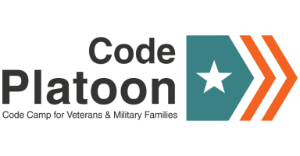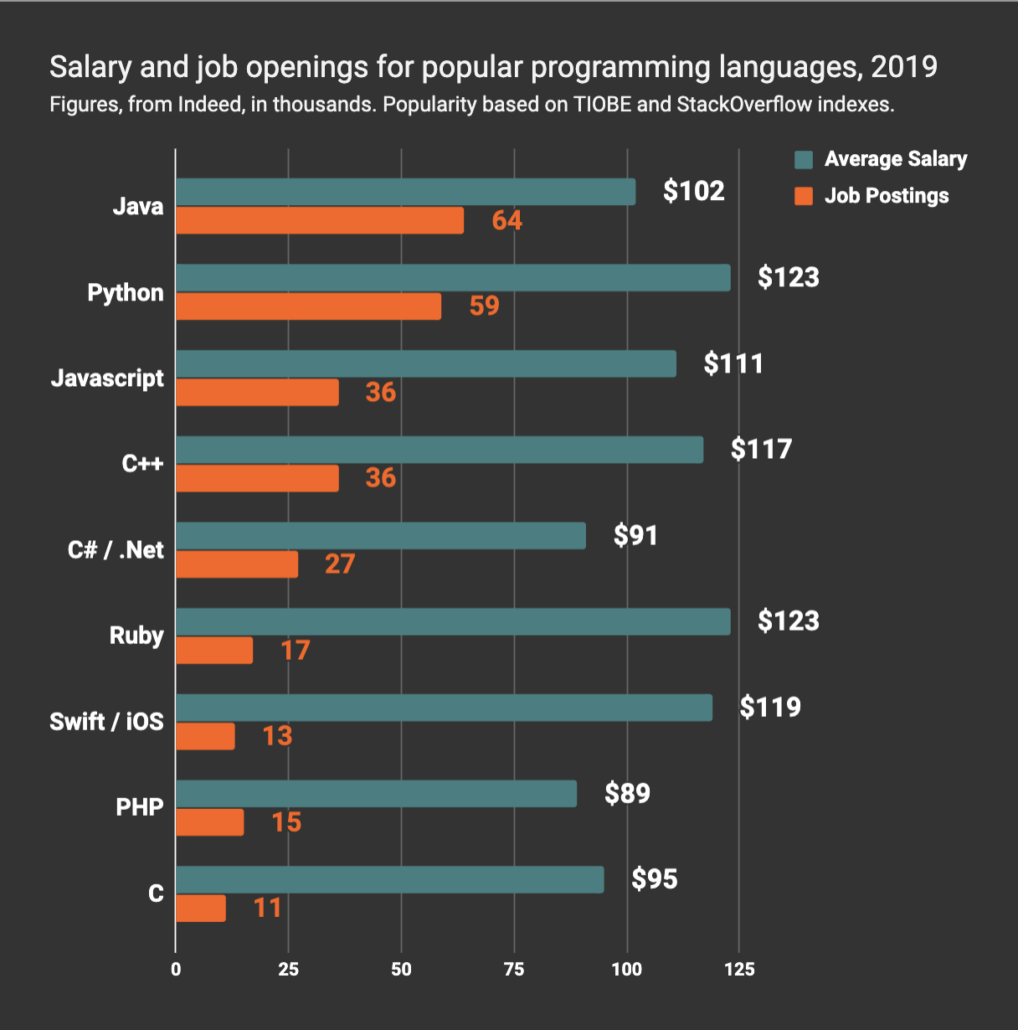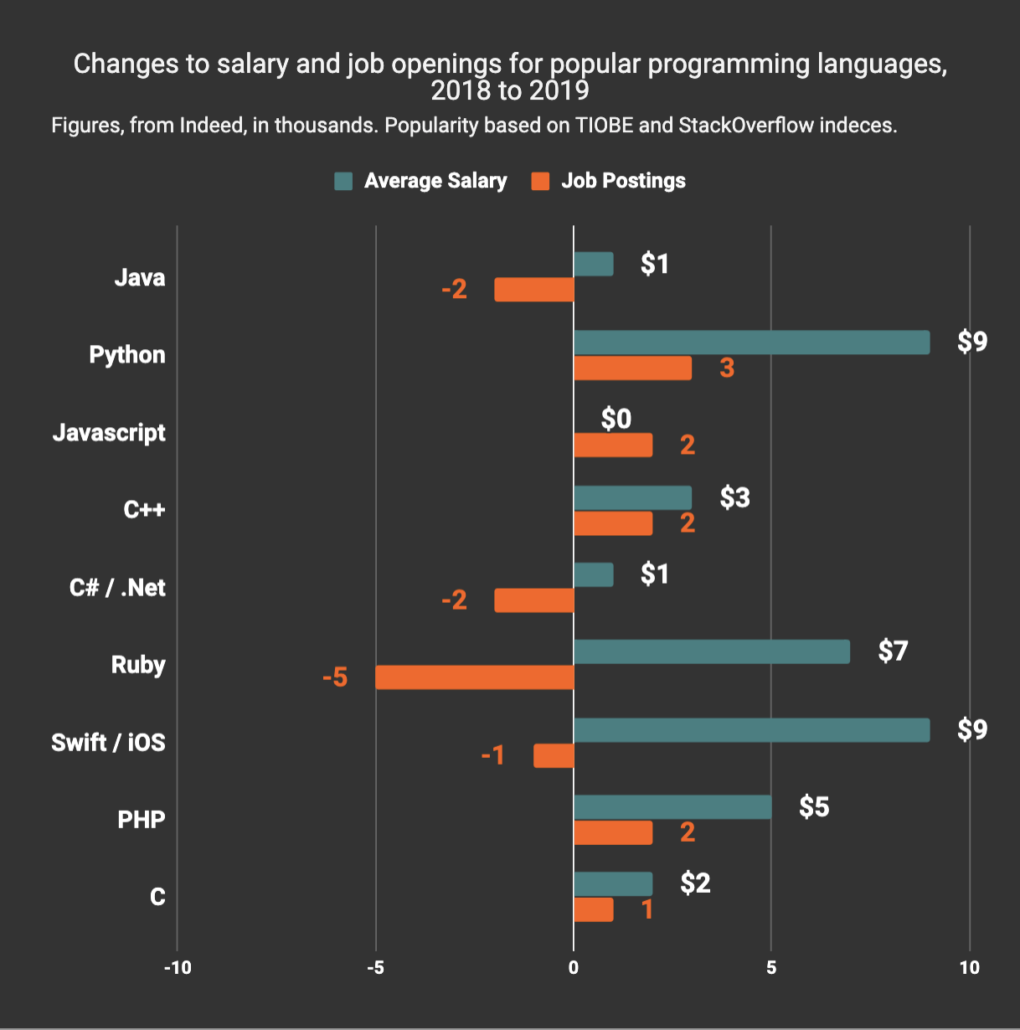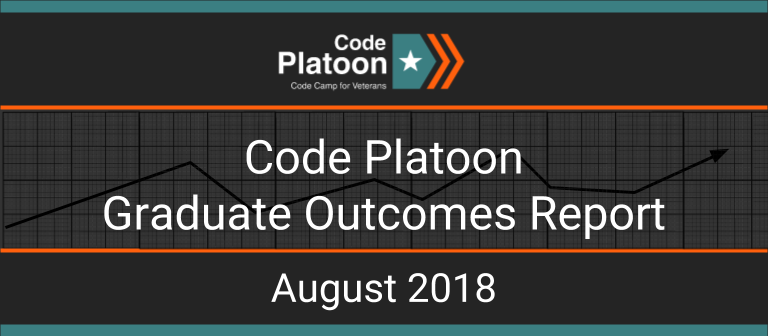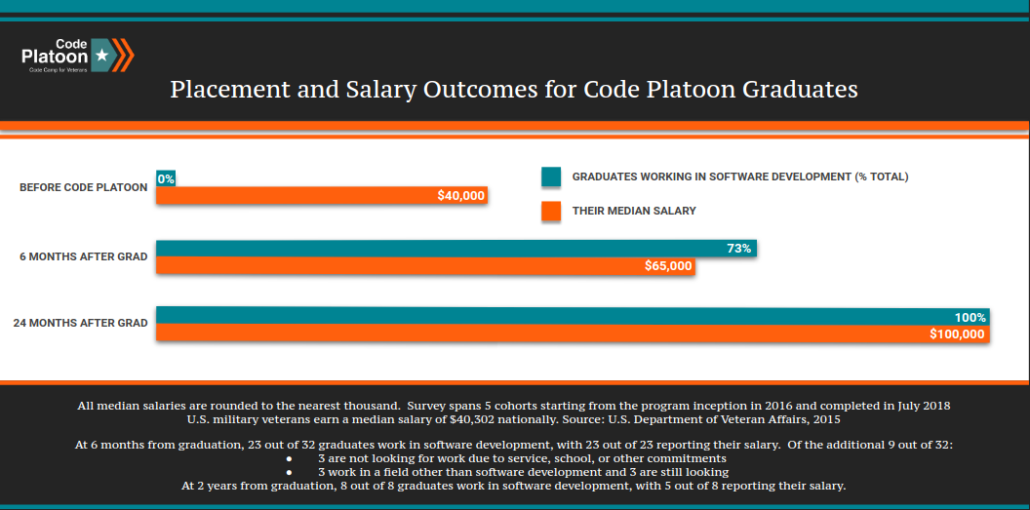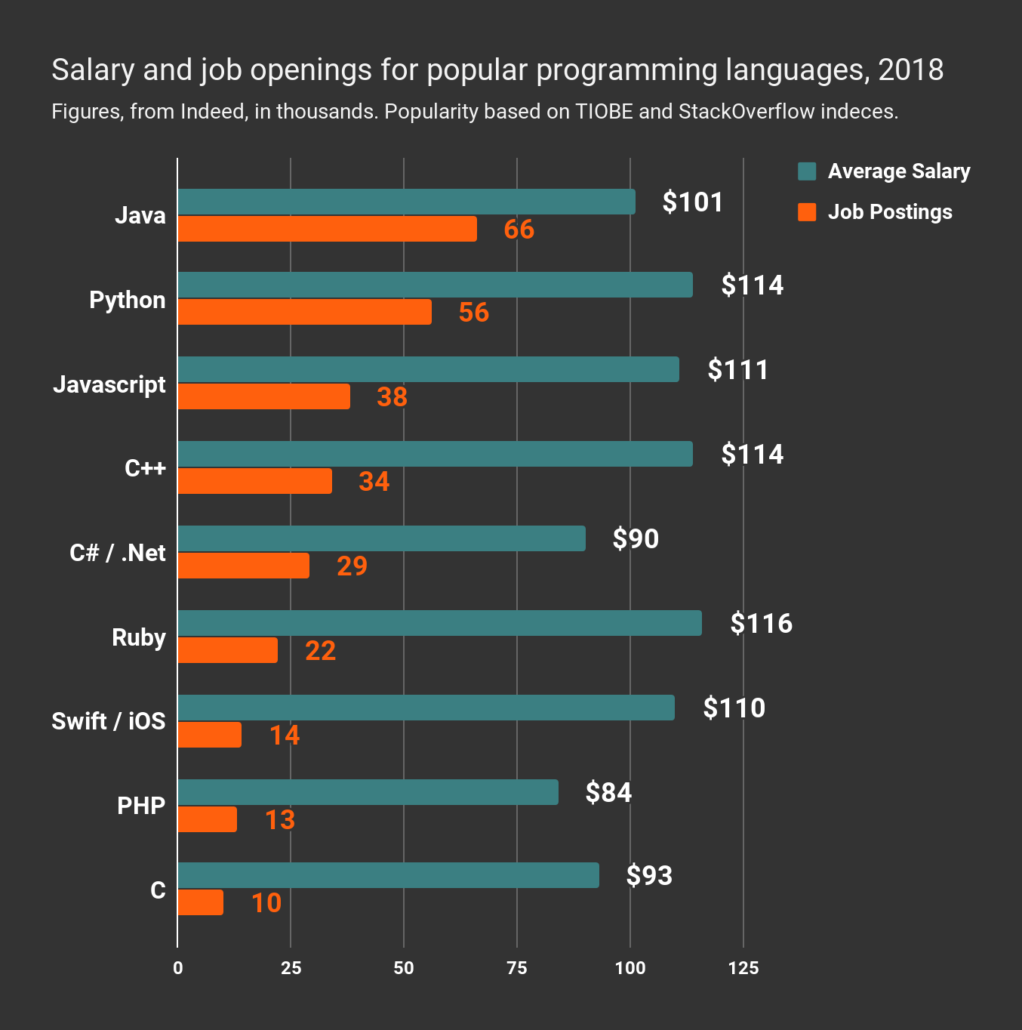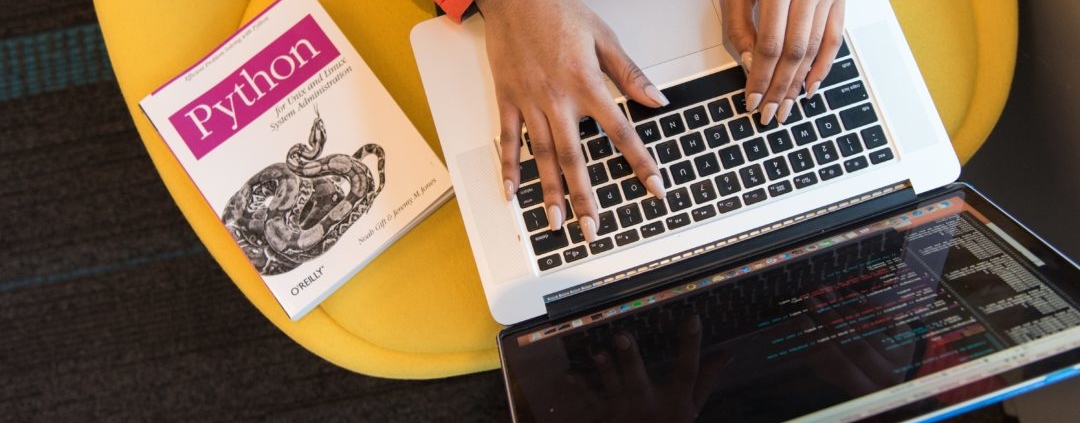Code Platoon Graduate Outcomes Report, November 2019
Since Code Platoon launched in 2016, our mission has been to prepare veterans and now military spouses to become professional software developers. Our students have, over those years, completed eight 14-week sessions.
A key word in our mission is to make our students ‘professional,’ which to us sets the bar of not only teaching students how to develop software but also preparing them for a new career in software development. We train our students on much more than basic programming skills, and emphasize the soft career skills and networking that is needed to get into the right jobs. Here are our results so far:
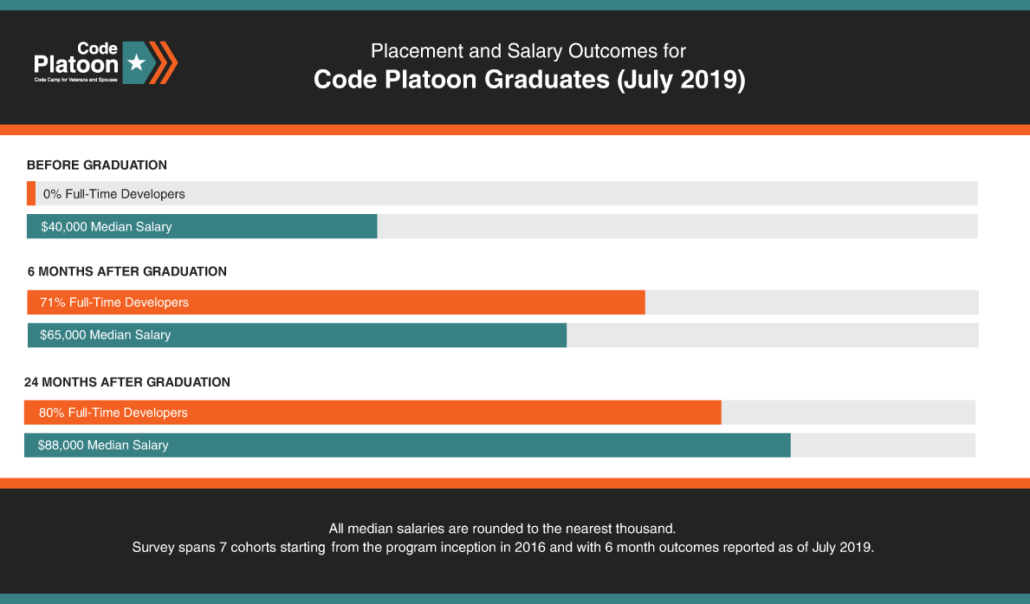
45 veterans graduated in our first 7 cohorts (the 8th one, Hotel Platoon, just graduated). Of those 45 students, 32 (71%) found jobs in software development within 6 months, median salary of $65,000. Of the remaining 13 graduates, 5 went to work outside of software development, 4 looked for work but did not find it within 6 months, and 4 graduated but did not actively look for full-time work.
Of the 25 graduates that completed Code Platoon two years ago, 14 responded to our survey, and their median salary (as software developers) is $88,000. Clearly, our graduates are more than simply employed; they have demonstrated great earning potential as well.
We attribute the excellent success rates of our graduates to several factors. First of all, our students come hungry to learn and dedicated to working long hours every day. Second of all, we have some great tech community partners who help our students with job placement. And, of course, there is the program itself…
We provide excellent technical training in software development
First and foremost, we teach programming skills. We focus on two of the most in-demand languages Python and Javascript and powerful frameworks like React, and Django. Our curriculum, designed and taught by our top instructors, is mostly hands-on; an hour or two of lectures a day, followed by lots of coding.
We recognize that technical skills are fundamental to getting a good job, but they are insufficient on their own. These days, you need to know industry best practices, like debugging, pair-programming, and test-driven development. We teach that too.
We provide soft skills training and preparation for a career in software development
We also prepare our students to find jobs and succeed in their interviews. We help write resumes, and prepare LinkedIn profiles. We teach our students interview skills, and practice technical and behavioral interviews.
Because we work with the veteran community, we are able to tailor our interview prep to help our students tell their stories to civilian interviewers. We even try to prepare our students for the complexities of post-military life. We have seminars on personal finance, workplace sensitivity and inclusion, and growth mindset.
We provide internships and networking opportunities to help you get that first software developer job!
Getting your first job in a new field like programming and development is hard. To bridge the gap from training to getting a job, paid internships are available at the end of the In-Person program.
And we know that nothing helps in getting a job like knowing people in the business. Our students are matched with industry mentors and professional software developers who volunteer as teaching assistants. By the end of our program, each of our students should have met at least 10 professional software developers.
None of these factors is the single determinant in the success of our students after graduation. Together, each part of our program and culture adds to the success that starts with the attitude and aptitude of the veterans who come to Code Platoon!
